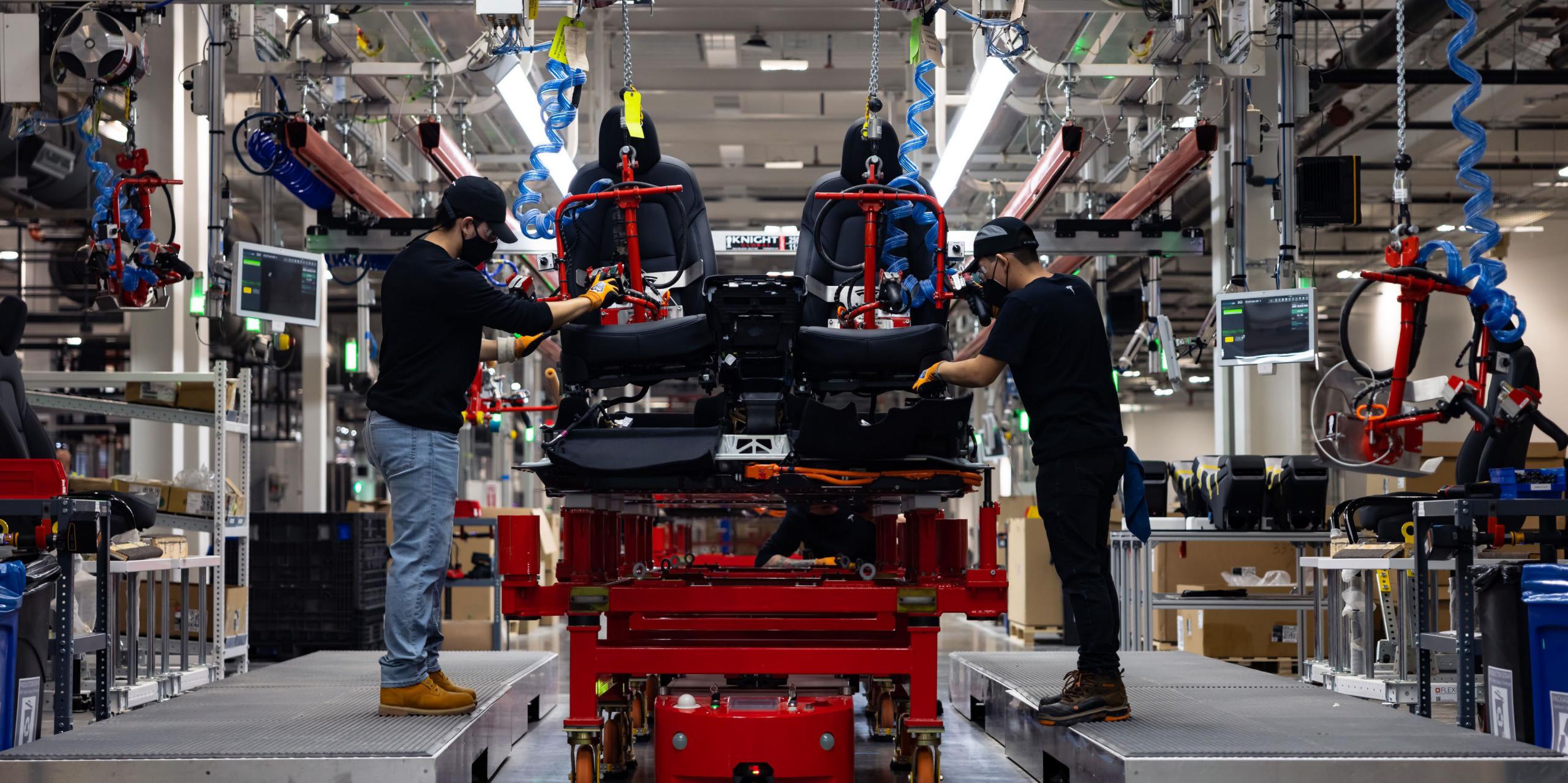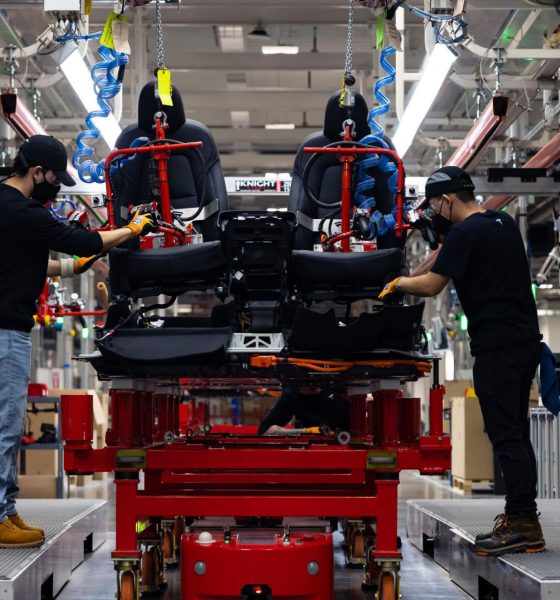

News
Tesla’s years of battery tech investments are becoming a buffer against nickel’s rising costs
For years, Tesla has invested heavily in its supply chain and battery strategy. So focused was the company in these endeavors that it even decided to design and produce its own batteries, the 4680 cells. The next-generation cells are a crucial component of Tesla’s long-term plan to make electric vehicles more affordable.
Elon Musk has been very open about Tesla’s need for nickel. Being a key component of its high-performance batteries, Musk stated back in 2020 that any company that can provide Tesla with environmentally-friendly nickel would be granted with a massive contract. During Battery Day, the CEO also highlighted that Tesla’s nickel-based 4680 batteries would be the heart of the company’s flagship products, like the Cybertruck.
But while nickel is a critical ingredient of lithium-ion batteries, experts have predicted an upcoming shortage for some time. Norway-based energy analytics firm Rystad Energy estimated that demand would surpass nickel supply around 2024, and by 2026, there might be a shortage of the material. This timeframe seems to have been accelerated by Russia’s invasion of Ukraine.
It should be noted that Russia controls 20% of the supply of the industry’s highest-grade nickel. The country also holds 10% of the world’s overall nickel supply. Thus, when Russia was hit by sanctions due to its invasion of Ukraine, the markets reacted. Nickel prices rose so much that the London Metal Exchange canceled trading for the material for more than a week. In a statement to Insider, auto industry analyst Lauren Fix noted that Russia’s control of nickel could have adverse effects for electric vehicle makers.
“Relying on your enemies to supply you with critical materials is never to your benefit. They have the ability to control the price you pay and can make it more difficult for you to gain supply to meet your goals,” Fix said.
Tesla is the market’s dominant electric vehicle maker, and for good reason. For years, the company has initiated plans to be as immune as possible from market shifts. Tesla built up a nickel supply practically independent of many market shifts by tapping into partnerships with nickel-mining companies and nickel production entities. The company even bought into a nickel mine in early 2021, providing itself with direct access to the material.
Tesla has also worked heavily in its battery technology, from the 2170 cells currently being made in Gigafactory Nevada with Panasonic to the 4680 cells that are currently being ramped in the company’s Kato Road facility. Tesla’s 4680 batteries were announced as nickel-based cells, though they feature a number of efficiencies that make their production more cost-effective and their life cycle longer compared to traditional batteries.
Interestingly enough, Tesla is not keeping its 4680 battery technology all for itself. In a previous announcement, Panasonic has confirmed that it would also be producing 4680 batteries, and they have already been validated by the electric vehicle maker. Panasonic has noted that mass production of the next-generation cells would begin around 2024.
Tesla also managed to handle the rising cost of nickel by using batteries that do not use the material at all. As per CEO Elon Musk, Tesla has started focusing on using iron-based batteries for its entry-level vehicles like the Model 3 RWD and the Model Y RWD, both of which are produced in Gigafactory Shanghai. The company has also mentioned that it had begun using manganese for some of its batteries to help reduce its reliance on nickel. Lastly, Tesla also launched a recycling program for its nickel-based batteries, which should help the company’s supply chain further in the future.
Tesla is still affected by shifts in the market. The fact that the company has raised its vehicle prices twice in recent weeks is proof of that. However, a number of experts have stated that Tesla’s forward-looking strategy still makes the company well-positioned to continue in its role as the undisputed leader in the electric vehicle industry. Tien Wong, a tech investor and the founder of Connectpreneur, shared his thoughts on the matter.
“Prewar, nickel prices, and potential shortages were a huge concern of Elon’s and the EV industry as a whole. The war will exacerbate these dynamics, which will result in higher prices and slower deliveries for EVs. As for Tesla, they are the market leader right now, so the nickel situation may actually help them versus competitors in the short run,” Wong said.
*Quotes courtesy of Insider.
Don’t hesitate to contact us with news tips. Just send a message to simon@teslarati.com to give us a heads up.

News
Tesla FSD fleet is nearing 7 billion total miles, including 2.5 billion city miles
As can be seen on Tesla’s official FSD webpage, vehicles equipped with the system have now navigated over 6.99 billion miles.

Tesla’s Full Self-Driving (Supervised) fleet is closing in on almost 7 billion total miles driven, as per data posted by the company on its official FSD webpage.
These figures hint at the massive scale of data fueling Tesla’s rapid FSD improvements, which have been quite notable as of late.
FSD mileage milestones
As can be seen on Tesla’s official FSD webpage, vehicles equipped with the system have now navigated over 6.99 billion miles. Tesla owner and avid FSD tester Whole Mars Catalog also shared a screenshot indicating that from the nearly 7 billion miles traveled by the FSD fleet, more than 2.5 billion miles were driven inside cities.
City miles are particularly valuable for complex urban scenarios like unprotected turns, pedestrian interactions, and traffic lights. This is also the difference-maker for FSD, as only complex solutions, such as Waymo’s self-driving taxis, operate similarly on inner-city streets. And even then, incidents such as the San Francisco blackouts have proven challenging for sensor-rich vehicles like Waymos.
Tesla’s data edge
Tesla has a number of advantages in the autonomous vehicle sector, one of which is the size of its fleet and the number of vehicles training FSD on real-world roads. Tesla’s nearly 7 billion FSD miles then allow the company to roll out updates that make its vehicles behave like they are being driven by experienced drivers, even if they are operating on their own.
So notable are Tesla’s improvements to FSD that NVIDIA Director of Robotics Jim Fan, after experiencing FSD v14, noted that the system is the first AI that passes what he described as a “Physical Turing Test.”
“Despite knowing exactly how robot learning works, I still find it magical watching the steering wheel turn by itself. First it feels surreal, next it becomes routine. Then, like the smartphone, taking it away actively hurts. This is how humanity gets rewired and glued to god-like technologies,” Fan wrote in a post on X.
News
Tesla starts showing how FSD will change lives in Europe
Local officials tested the system on narrow country roads and were impressed by FSD’s smooth, human-like driving, with some calling the service a game-changer for everyday life in areas that are far from urban centers.

Tesla has launched Europe’s first public shuttle service using Full Self-Driving (Supervised) in the rural Eifelkreis Bitburg-Prüm region of Germany, demonstrating how the technology can restore independence and mobility for people who struggle with limited transport options.
Local officials tested the system on narrow country roads and were impressed by FSD’s smooth, human-like driving, with some calling the service a game-changer for everyday life in areas that are far from urban centers.
Officials see real impact on rural residents
Arzfeld Mayor Johannes Kuhl and District Administrator Andreas Kruppert personally tested the Tesla shuttle service. This allowed them to see just how well FSD navigated winding lanes and rural roads confidently. Kruppert said, “Autonomous driving sounds like science fiction to many, but we simply see here that it works totally well in rural regions too.” Kuhl, for his part, also noted that FSD “feels like a very experienced driver.”
The pilot complements the area’s “Citizen Bus” program, which provides on-demand rides for elderly residents who can no longer drive themselves. Tesla Europe shared a video of a demonstration of the service, highlighting how FSD gives people their freedom back, even in places where public transport is not as prevalent.
What the Ministry for Economic Affairs and Transport says
Rhineland-Palatinate’s Minister Daniela Schmitt supported the project, praising the collaboration that made this “first of its kind in Europe” possible. As per the ministry, the rural rollout for the service shows FSD’s potential beyond major cities, and it delivers tangible benefits like grocery runs, doctor visits, and social connections for isolated residents.
“Reliable and flexible mobility is especially vital in rural areas. With the launch of a shuttle service using self-driving vehicles (FSD supervised) by Tesla in the Eifelkreis Bitburg-Prüm, an innovative pilot project is now getting underway that complements local community bus services. It is the first project of its kind in Europe.
“The result is a real gain for rural mobility: greater accessibility, more flexibility and tangible benefits for everyday life. A strong signal for innovation, cooperation and future-oriented mobility beyond urban centers,” the ministry wrote in a LinkedIn post.
News
Tesla China quietly posts Robotaxi-related job listing
Tesla China is currently seeking a Low Voltage Electrical Engineer to work on circuit board design for the company’s autonomous vehicles.

Tesla has posted a new job listing in Shanghai explicitly tied to its Robotaxi program, fueling speculation that the company is preparing to launch its dedicated autonomous ride-hailing service in China.
As noted in the listing, Tesla China is currently seeking a Low Voltage Electrical Engineer to work on circuit board design for the company’s autonomous vehicles.
Robotaxi-specific role
The listing, which was shared on social media platform X by industry watcher @tslaming, suggested that Tesla China is looking to fill the role urgently. The job listing itself specifically mentions that the person hired for the role will be working on the Low Voltage Hardware team, which would design the circuit boards that would serve as the nervous system of the Robotaxi.
Key tasks for the role, as indicated in the job listing, include collaboration with PCB layout, firmware, mechanical, program management, and validation teams, among other responsibilities. The role is based in Shanghai.
China Robotaxi launch
China represents a massive potential market for robotaxis, with its dense urban centers and supportive policies in select cities. Tesla has limited permission to roll out FSD in the country, though despite this, its vehicles have been hailed as among the best in the market when it comes to autonomous features. So far, at least, it appears that China supports Tesla’s FSD and Robotaxi rollout.
This was hinted at in November, when Tesla brought the Cybercab to the 8th China International Import Expo (CIIE) in Shanghai, marking the first time that the autonomous two-seater was brought to the Asia-Pacific region. The vehicle, despite not having a release date in China, received a significant amount of interest among the event’s attendees.








